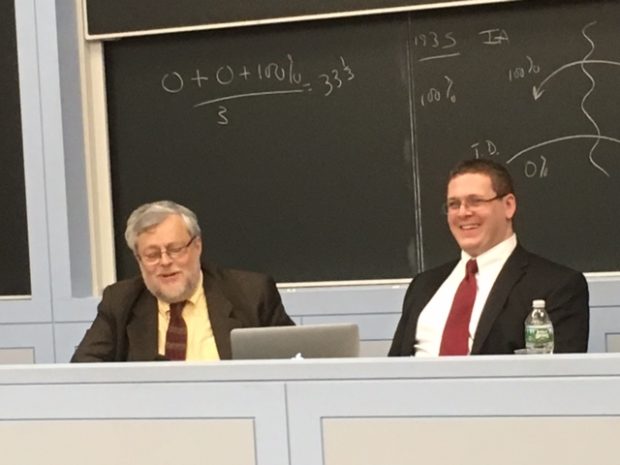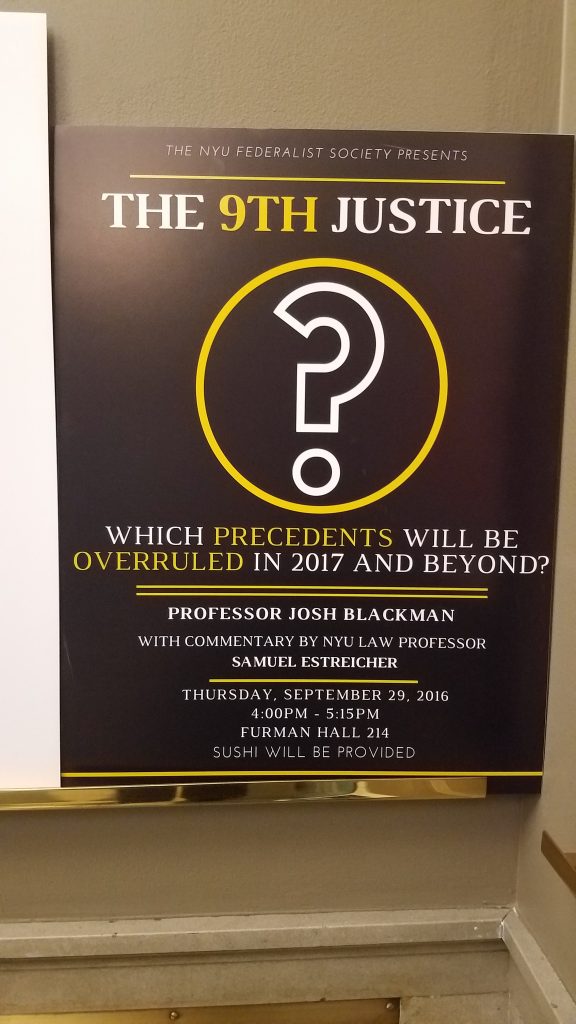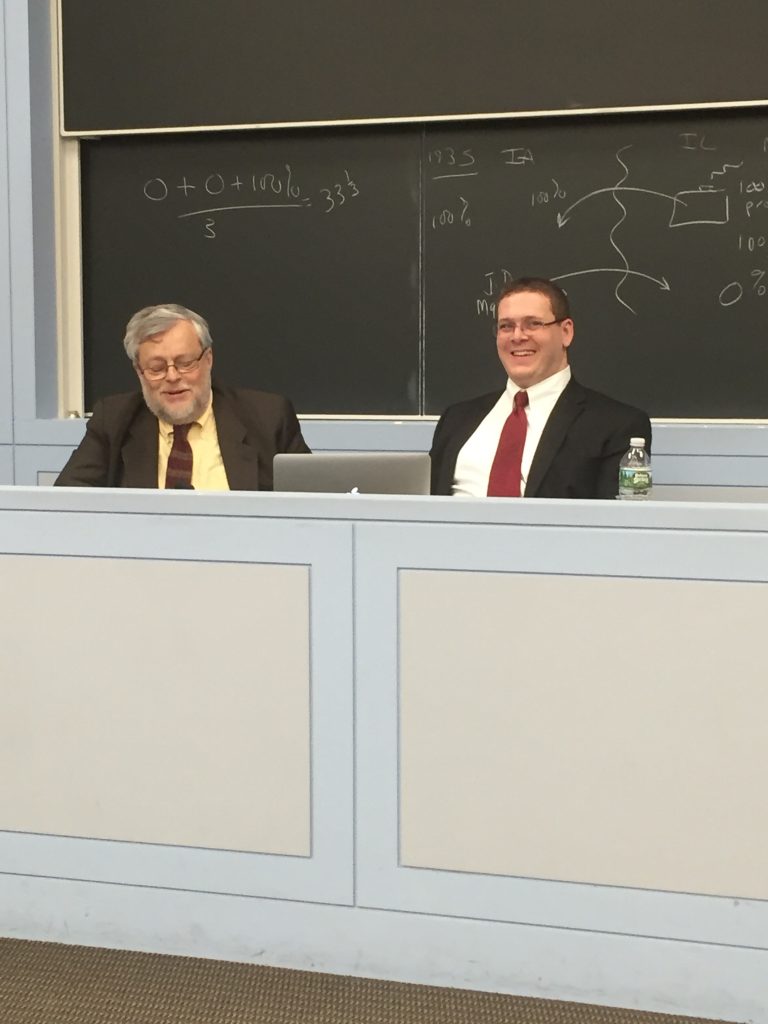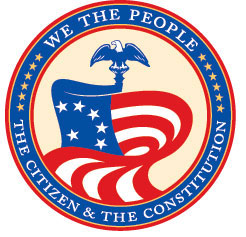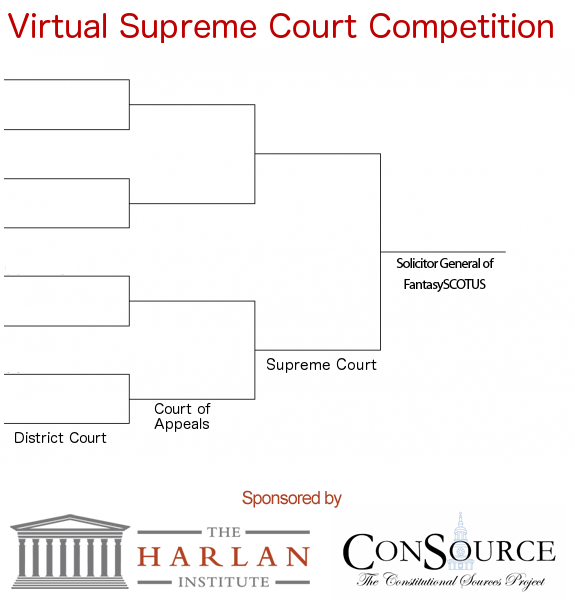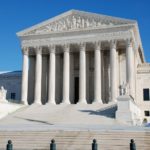Jonathan Chait interviewed President Obama in NY Magazine, and several of this comments focused on the ACA.
First, he discussed the difficulties of keeping together his fragile caucus, and how Republicans were not interested in supporting his reform.
Same thing with the public option[for health-care reform]. Even though we had very solid majorities in the House, the ceiling for what we could do was our decent, but, with the filibuster, constantly threatened majority in the Senate. That was complicated by the fact that, if you’ll recall, [Al] Franken hadn’t been seated yet, so that gave us even less room to maneuver. …
During the health-care debate, you know, there was a point in time where, after having had multiple negotiations with [Iowa senator Chuck] Grassley, who was the ranking member alongside my current Chinese ambassador, [Max] Baucus, in exasperation I finally just said to Grassley, “Is there any form of health-care reform that you can support?” and he shrugged and looked a little sheepish and said, “Probably not.”
The pivotal decision came after the election of Scott Brown. Obama relayed how he worked with Pelosi and Reid to push forward.
The most important phone call I made after that was to Nancy Pelosi, because the question I posed to her and to Harry Reid was, “Are you guys still game? Because if you guys are still game, we’ll find a way. But I can’t do it unless Democrats are willing to take what are going to be some tough votes.” Now, part of my argument to them was, you’ve already paid the price politically, it’s not as if a failed health-care effort would be helpful in midterm elections, it’s better to go ahead and push through and then show that we had gotten something done that was really important to the American people. I give Nancy and Harry and a whole lot of Democrats enormous credit. It was one of those moments where a lot of people did the right thing even though the politics of it were bad. And I’ve said to the Democratic caucus when I’ve met with them in subsequent years that their willingness to go ahead and walk the plank to get the Affordable Care Act done is one of the reasons that I continue to be proud of the Democratic Party. For all its warts and all the mistakes that any political party makes — catering to the interest groups that help get people elected — the truth is that the ACA vote showed that when push came to shove and people had to do something they thought was right, even if it was not going to be helpful to their reelection, the majority of Democrats were willing to do it. And certainly Nancy and Harry were willing to do it. We saw that again later on some tough budget votes, and the Iran deal, and I give them enormous credit for that. So once Nancy said, “I’m game,” then it was really just, at that point, a set of tactical questions: What legislative mechanisms could we use to advance legislation that was 90 to 95 percent done but still had 5 percent of stuff that if we had gone through a regular process could have been cleaned up but that ultimately was still going to deliver real help to millions of people across the country?
Obama also admitted that he began researching the reconciliation process before the Brown election, when it looked like Martha Coakley was not doing too well.
The truth is that once we knew that the Massachusetts election might be difficult, and that was probably a couple weeks ahead of time, then we started doing some contingency planning. That was something that I had to learn fairly early on in the process, although we had learned it to some degree in the campaign: You have to have a plan B. You always have to be very quiet about your plan B, because you don’t want it to sabotage your plan A — and sometimes people are looking for an out and want plan B. But we had begun to look at what other paths might be possible, and this one presented itself. It still required really deft work by Nancy and Harry and our legislative teams, but we knew at that point that it was possible, and once we had that path, then it was really just a matter of working Congress. It’s interesting, in 2011, when the left had really gotten irritated with me because of the budget negotiations, there was always this contrast between Obama and LBJ, who really worked Congress. But I tell you, those two weeks, that was full LBJ. I think [White House photographer] Pete Souzahas a picture series of every meeting and phone call that I was making during the course of that, which is actually pretty fun to see. Basically, every day for the following two weeks, we were working Democrats, because at that point there was no prospect of us getting any Republicans. Although I devoted an enormous amount of time with Olympia Snowe, the one person who, to her credit, took a tough vote to get ACA out of committee before then deciding that she couldn’t support the broader effort.
Obama also related the difficulty of Democrats supporting the ACA after the Brown election:
I would say 80 percent moral case, because the numbers weren’t with us. Look, Scott Brown had just won, poll numbers were rotten, people were angry. The folks who I will always consider the real heroes of the ACA were the legislators, mostly younger and in swing districts, who had been from either the ’06 wave or the ’08 wave. They had tough races and were just a great bunch of guys. With them it was an entirely moral case: What’s the point of being here if not this?
Plus, he referenced Bart Stupak’s “iron-clad” executive order.
Yeah, because then it was transactional, then it was “I’d like this, I need that.” And one of the things that’s changed from the Johnson era obviously is I don’t have a postmaster job. Shoot, not just Johnson’s age — Lincoln’s age. Good-government reforms have hamstrung an administration, which I think is for the most part for the best. But it means that what you’re really saying to them is, “This is the right thing to do and I’ll come to your fund-raiser in Podunk and I will make sure that I’ve got your back.” In some cases there were some substantive issues that we had to work really hard on. [Former congressman] Bart Stupak was a very sincere, pro-life legislator and a Democrat, a really good man who worked really hard with me to try to get to yes and ended up getting there, working along with Sister Carol [Keehan], the head of the Catholic hospitals, despite strong opposition from the Catholic bishops. So in some cases there really were legitimate difficulties, substantive issues that had to be worked through.
This paragraph discusses, more broadly, how the President viewed the gridlock in Washington as justifying his executive actions.
I’m talking about across the board. In my mind the [Affordable Care Act] has been a huge success, but it’s got real problems. They’re eminently fixable problems in terms of strengthening the marketplace, improving the subsidies so more folks can get it, making sure everybody has Medicaid who was qualified under the original legislation, doing more on the cost containment. But you hit a point where if Congress just is not willing to make any constructive modifications and it’s all political football, then you’re getting a suboptimal solution. I can work really hard — and we have — in striking the right balance around NSA issues and how we balance privacy versus the need to collect intelligence and engage in counterterrorism. But it was really helpful when, in a rare moment of bipartisanship, we got the USA Freedom Act done. That embedded certain reforms and reflected a strong consensus. And so I have ended up taking a lot of executive actions that I’m very proud of, because they are solving real problems and were well within my legal authority to do. But I haven’t lost my preference for good old-fashioned debate, bills, and the democratic process. If there’s one wish that I have for future presidents, it’s not an imperial presidency, it is a functional, sensible majority-and-opposition being able to make decisions based on facts and policy and compromise. That would have been my preference for the majority of my presidency. It was an option that wasn’t always available. But I hope the American people continue to understand that that’s how the system should work.
I’ll close with the President’s cognitive dissonance that people do not believe him:
Here’s one thing that I am always surprised by: the degree to which people don’t just take me at my word. If you go back and you read speeches I made when I was running for the U.S. Senate in 2003, or if you go back further and you look at statements I made when I was on the Harvard Law Review, my worldview is pretty consistent. And I generally try to do what I say I’m gonna do.
